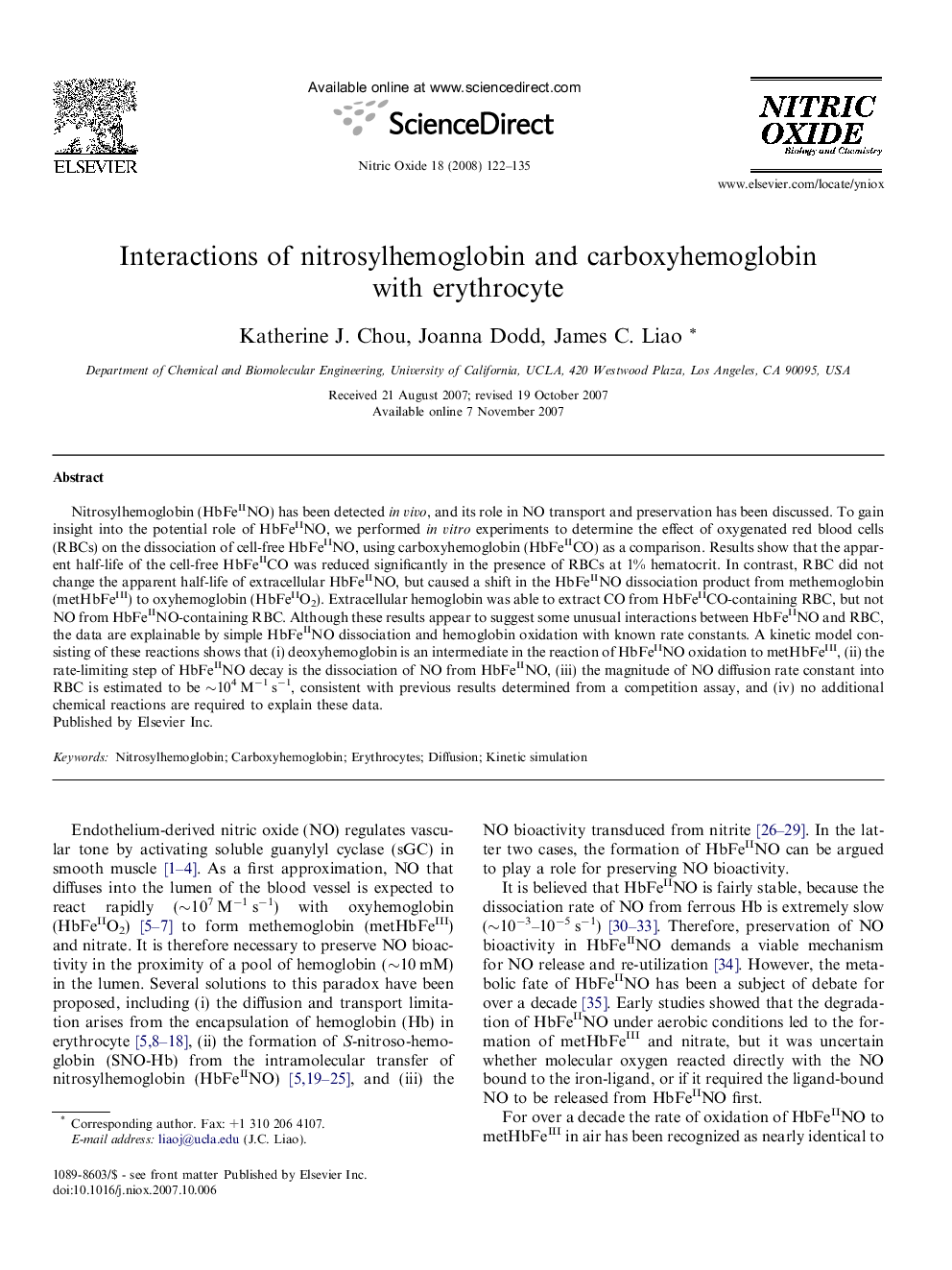| Article ID | Journal | Published Year | Pages | File Type |
|---|---|---|---|---|
| 2001571 | Nitric Oxide | 2008 | 14 Pages |
Abstract
Nitrosylhemoglobin (HbFeIINO) has been detected in vivo, and its role in NO transport and preservation has been discussed. To gain insight into the potential role of HbFeIINO, we performed in vitro experiments to determine the effect of oxygenated red blood cells (RBCs) on the dissociation of cell-free HbFeIINO, using carboxyhemoglobin (HbFeIICO) as a comparison. Results show that the apparent half-life of the cell-free HbFeIICO was reduced significantly in the presence of RBCs at 1% hematocrit. In contrast, RBC did not change the apparent half-life of extracellular HbFeIINO, but caused a shift in the HbFeIINO dissociation product from methemoglobin (metHbFeIII) to oxyhemoglobin (HbFeIIO2). Extracellular hemoglobin was able to extract CO from HbFeIICO-containing RBC, but not NO from HbFeIINO-containing RBC. Although these results appear to suggest some unusual interactions between HbFeIINO and RBC, the data are explainable by simple HbFeIINO dissociation and hemoglobin oxidation with known rate constants. A kinetic model consisting of these reactions shows that (i) deoxyhemoglobin is an intermediate in the reaction of HbFeIINO oxidation to metHbFeIII, (ii) the rate-limiting step of HbFeIINO decay is the dissociation of NO from HbFeIINO, (iii) the magnitude of NO diffusion rate constant into RBC is estimated to be â¼104Â Mâ1Â sâ1, consistent with previous results determined from a competition assay, and (iv) no additional chemical reactions are required to explain these data.
Related Topics
Life Sciences
Biochemistry, Genetics and Molecular Biology
Biochemistry
Authors
Katherine J. Chou, Joanna Dodd, James C. Liao,
